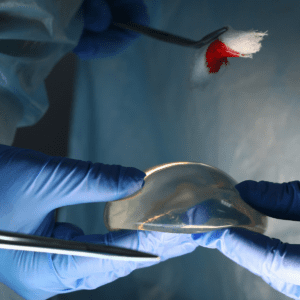When it comes to breast implant removal, like just about all surgeries, there is no one-size-fits-all. Sometimes our preferences and options change;  other times there are circumstances out of our control that may force our hands. If you’re thinking about breast implant removal surgery because you’re experiencing symptoms that may demand their removal, it’s normal to feel apprehensive about your health and about your appearance. One of the best ways to combat apprehensiveness is through information. So let’s discuss the basics of breast implant removal. Also known as explant surgery, the removal of breast implants is a surgical procedure that removes (or explants) the implants from the breast pocket. It’s done for a number of reasons, from breast implant illness to end of their natural lifespan (it’s recommended that you replace your breast implants every 10 years to avoid any complications) to capsular contracture or rupture and even simple just change in your preferences.
other times there are circumstances out of our control that may force our hands. If you’re thinking about breast implant removal surgery because you’re experiencing symptoms that may demand their removal, it’s normal to feel apprehensive about your health and about your appearance. One of the best ways to combat apprehensiveness is through information. So let’s discuss the basics of breast implant removal. Also known as explant surgery, the removal of breast implants is a surgical procedure that removes (or explants) the implants from the breast pocket. It’s done for a number of reasons, from breast implant illness to end of their natural lifespan (it’s recommended that you replace your breast implants every 10 years to avoid any complications) to capsular contracture or rupture and even simple just change in your preferences.
What are the breast implant removal surgery procedures?
Just like breasts, not all explant surgeries are the same, and there are generally four stages of explant surgeries:
- A subtotal or partial capsulectomy. A subtotal or partial capsulectomy removes only a part of the scar tissue capsule and likely replaces your implant. Additionally, your surgeon may only need a smaller incision for this type of capsulectomy.
- A capsulectomy is the removal of the breast implant and the breast implant capsule via an incision in the capsule, where the implant is removed first, followed by the capsule. Typically, a capsulectomy is preferred when the breast implant capsule is fused to the muscle or rib cage.
- Total capsulectomy. A total capsulectomy removes all of the scar tissue capsule, including the scar tissue lining around the implant, and very likely the implant as well, and involves removing the implant first, followed by the capsule.
- En Bloc Capsulectomy. An en-bloc capsulectomy removes the entire capsule, including the enclosed implant, at the same time and in one-piece.
Is breast explant surgery safe?
 It’s a very safe procedure, but to ensure the best outcome and recovery, it’s essential to do your research and choose a board-certified plastic surgeon. Speaking of recovery, you can expect a similar recovery with your breast implant removal surgery as you did with your breast augmentation surgery: three days of solid downtime and relative downtime for at least two weeks. You can expect soreness, swelling, bruising and sensitivity for a few weeks, but it should subside enough within the first few days to allow you to return to most of your activities without significant discomfort. Most patients can return to light activities within one week and more strenuous exercise after about six weeks. To ensure you have the best possible outcome, Dr. Barrett has curated a breast augmentation recovery kit to set his breast augmentation and breast implant removal patients up for surgical success with the least amount of down time and discomfort possible.
It’s a very safe procedure, but to ensure the best outcome and recovery, it’s essential to do your research and choose a board-certified plastic surgeon. Speaking of recovery, you can expect a similar recovery with your breast implant removal surgery as you did with your breast augmentation surgery: three days of solid downtime and relative downtime for at least two weeks. You can expect soreness, swelling, bruising and sensitivity for a few weeks, but it should subside enough within the first few days to allow you to return to most of your activities without significant discomfort. Most patients can return to light activities within one week and more strenuous exercise after about six weeks. To ensure you have the best possible outcome, Dr. Barrett has curated a breast augmentation recovery kit to set his breast augmentation and breast implant removal patients up for surgical success with the least amount of down time and discomfort possible.
Do you want to learn more about Barrett Plastic Surgery? Keep up to date by subscribing to our blog and following us on social media at Twitter, TikTok, Instagram, Realself, YouTube, Snapchat, Yelp, and Facebook for updates.
Thank you for visiting!

